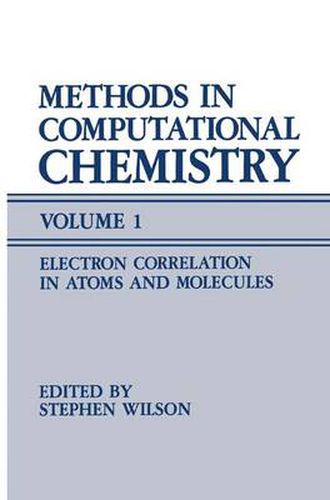Readings Newsletter
Become a Readings Member to make your shopping experience even easier.
Sign in or sign up for free!
You’re not far away from qualifying for FREE standard shipping within Australia
You’ve qualified for FREE standard shipping within Australia
The cart is loading…






This title is printed to order. This book may have been self-published. If so, we cannot guarantee the quality of the content. In the main most books will have gone through the editing process however some may not. We therefore suggest that you be aware of this before ordering this book. If in doubt check either the author or publisher’s details as we are unable to accept any returns unless they are faulty. Please contact us if you have any questions.
When, forty years ago, as a student of Charles Coulson in Oxford I began work in theoretical chemistry, I was provided with a Brunsviga calculator-a small mechanical device with a handle for propulsion, metal levers for setting the numbers, and a bell that rang to indicate overflow. What has since come to be known as computational chemistry was just beginning. There followed a long period in which the fundamental theory of the golden age (1925-1935) was extended and refined and in which the dreams of the early practitioners were gradually turned into hard arithmetic reality. As a still-computing survivor from the early postwar days now enjoying the benefits of unbelievably improved hardware, I am glad to contribute a foreword to this series and to have the opportunity of providing a little historical perspective. After the Brunsviga came the electromechanical machines of the late 1940s and early 1950s, and a great reduction in the burden of calculating molecular wavefunctions. We were now happy. At least for systems con taining a few electrons it was possible to make fully ab initio calculations, even though semiempirical models remained indispensable for most molecules of everyday interest. The 1950 papers of Hall and of Roothaan represented an important milestone along the road to larger-scale non empirical calculations, extending the prewar work of Hartree and Fock from many-electron atoms to many-electron molecules-and thus into real chemistry.
$9.00 standard shipping within Australia
FREE standard shipping within Australia for orders over $100.00
Express & International shipping calculated at checkout
This title is printed to order. This book may have been self-published. If so, we cannot guarantee the quality of the content. In the main most books will have gone through the editing process however some may not. We therefore suggest that you be aware of this before ordering this book. If in doubt check either the author or publisher’s details as we are unable to accept any returns unless they are faulty. Please contact us if you have any questions.
When, forty years ago, as a student of Charles Coulson in Oxford I began work in theoretical chemistry, I was provided with a Brunsviga calculator-a small mechanical device with a handle for propulsion, metal levers for setting the numbers, and a bell that rang to indicate overflow. What has since come to be known as computational chemistry was just beginning. There followed a long period in which the fundamental theory of the golden age (1925-1935) was extended and refined and in which the dreams of the early practitioners were gradually turned into hard arithmetic reality. As a still-computing survivor from the early postwar days now enjoying the benefits of unbelievably improved hardware, I am glad to contribute a foreword to this series and to have the opportunity of providing a little historical perspective. After the Brunsviga came the electromechanical machines of the late 1940s and early 1950s, and a great reduction in the burden of calculating molecular wavefunctions. We were now happy. At least for systems con taining a few electrons it was possible to make fully ab initio calculations, even though semiempirical models remained indispensable for most molecules of everyday interest. The 1950 papers of Hall and of Roothaan represented an important milestone along the road to larger-scale non empirical calculations, extending the prewar work of Hartree and Fock from many-electron atoms to many-electron molecules-and thus into real chemistry.